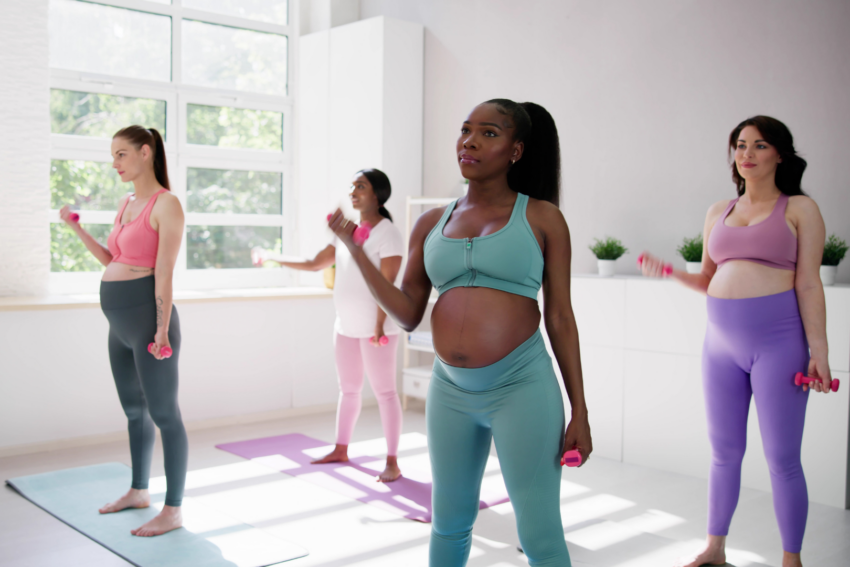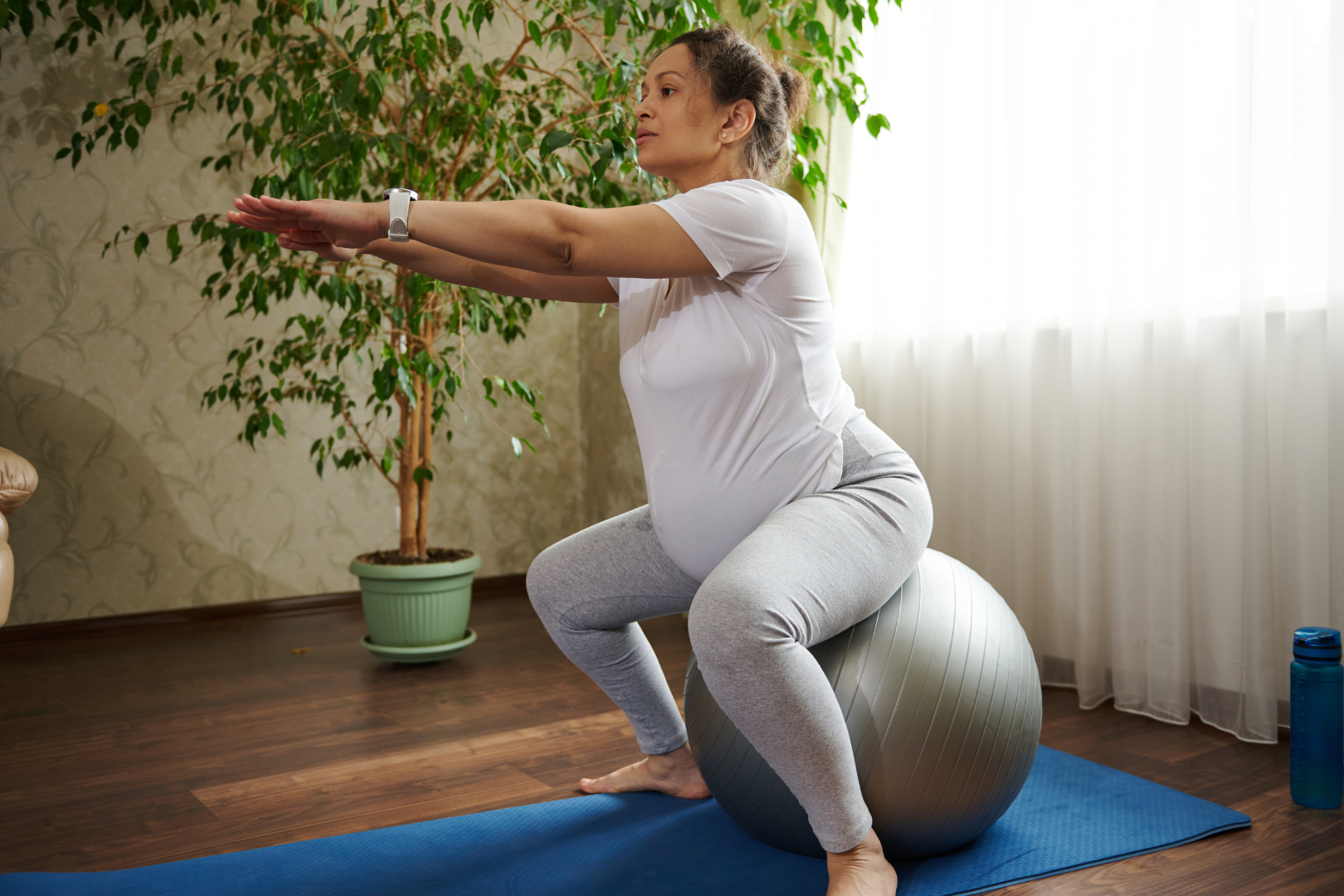
Share On Social!
From what you put into your body to what you do with it, just about anything can impact your health when you’re pregnant.
It can also impact the health of the unborn child.
That’s why it’s important to take the steps necessary to ensure the health and safety of both the expectant mother and baby.
The best way to start is to ensure you get the recommended amount of physical activity each week. The truth is that Moving Matters!
Let’s review the physical activity guidelines for pregnant and postpartum women and learn about the benefits of movement before and after pregnancy.
Physical Activity Recommendations
Like anyone at any stage of life, physical activity is vital to maintaining good health leading to a better quality of life.
For pregnant women that means at least 150 minutes (2 hours, 30 minutes) of moderate aerobic activity every week during and after pregnancy, according to the Centers for Disease Control and Prevention (CDC).
This translates to roughly 30 minutes a day, 5 days a week.
To meet this physical activity guideline, the CDC recommends brisk walking, yoga poses that are safe for pregnant women, water aerobics, and stationary bike riding.
However, after the first trimester, the CDC advises against engaging in any activities where you’re lying flat on your back.
Physical Activity Health Benefits
Accompanied by eating healthy, nutritious foods, pregnant women who engage in physical activity can keep their heart, bones, and mind functioning while creating a new life.
Daily physical activity while pregnant has the added benefit of reducing the risk of excessive weight gain, gestational diabetes, pre-eclampsia, and helps with postpartum depression symptoms, according to the US Department of Health & Human Services.
Regular exercise can help pregnant women with their self-esteem and lower their risk for anxiety.
While pregnant, physical activity can help with aches and pains, including constipation, varicose veins, backaches, and exhaustion.
Maintaining regular physical activity can also help prepare for labor – and a potential lower risk of preterm delivery – while helping women recover faster.
Pregnant women who exercise regularly may also have an easier time getting back down to a healthy weight after giving birth.
Similarly to all people, pregnant women can get a better night’s rest when engaging in regular exercise.
Types of Exercise During Pregnancy
There are a variety of pregnancy-safe exercises and activities you can do to maintain your and your unborn child’s health.
Brisk walking can be a great workout while you are pregnant, and it doesn’t strain your joints and muscles, according to March of Dimes.
Swimming is another great workout to add to your routine because the water helps support the weight of the growing baby while keeping your heart rate up. The activity is also perfect for those who suffer from lower back pain while doing other types of activities.

Yoga and Pilates can give the body the extra stretch it needs to give birth while easing round ligament pain, which is caused when the stomach expands to accommodate the growing baby.
Many poses are safe during pregnancy, but for others there are modified versions someone who is expecting can get into.
Pregnant women can check out yoga classes in-person and online or find a video on YouTube to follow.
On the opposite end of the activity spectrum, pregnant women can engage in low-impact aerobics, which entails having one foot on the ground or equipment. Low impact aerobics such as walking, riding a stationary bike, and using an elliptical machine don’t put as much strain on the body as high-impact aerobic activities like running and jumping rope.
Pregnant women can also engage in strength training exercises with weights as long as they aren’t excessively heavy.
It’s advised that pregnant women only lift up to 25 pounds during the first trimester and nothing above 20 pounds during the second and third trimesters, according to the National Institutes of Health (NIH).
However, not all of these exercises are deemed safe during pregnancy and should be discussed with your provider, especially if you are considered high risk or have increased risk for certain pregnancy-related medical conditions, according to March of Dimes.
If at any time you experience symptoms such as vaginal bleeding, chest pain, fast heartbeat, trouble breathing, feeling dizzy or faint, headache, muscle weakness, trouble walking or pain or swelling in the lower legs, painful contractions, or the baby stops moving, you should stop all physical activity and call your provider.
Moving Matters to the Health of Your Little One
As part of the initiative to get 27 million Americans moving by 2027, Salud America! and UT Health San Antonio are partnering with Active People, Healthy Nation and their Moving Matters campaign to share what more physical activity can do for your health.
The goal is to get 10 million adults and 2 million young people to meet the minimum aerobic physical activity guideline.
This also includes improving physical activity in people who are recovering from cancer, seniors, pregnant women, people suffering from chronic disease, and children.
Find more activities and physical activity recommendations for your age and/or health condition.
Those who exercise regularly can experience more energy throughout the day, better sleep, better concentration, improved blood pressure and cholesterol levels, and lower your risk for certain diseases.
Try some of these tips to help get you and your family moving toward a healthier you and explore some of the movement guidelines you should be striving to reach.
For ways to overcome hurdles to weekly physical activity goals visit the CDC website.
Explore More Topics Covered in Our Moving Matters Series
By The Numbers
142
Percent
Expected rise in Latino cancer cases in coming years



